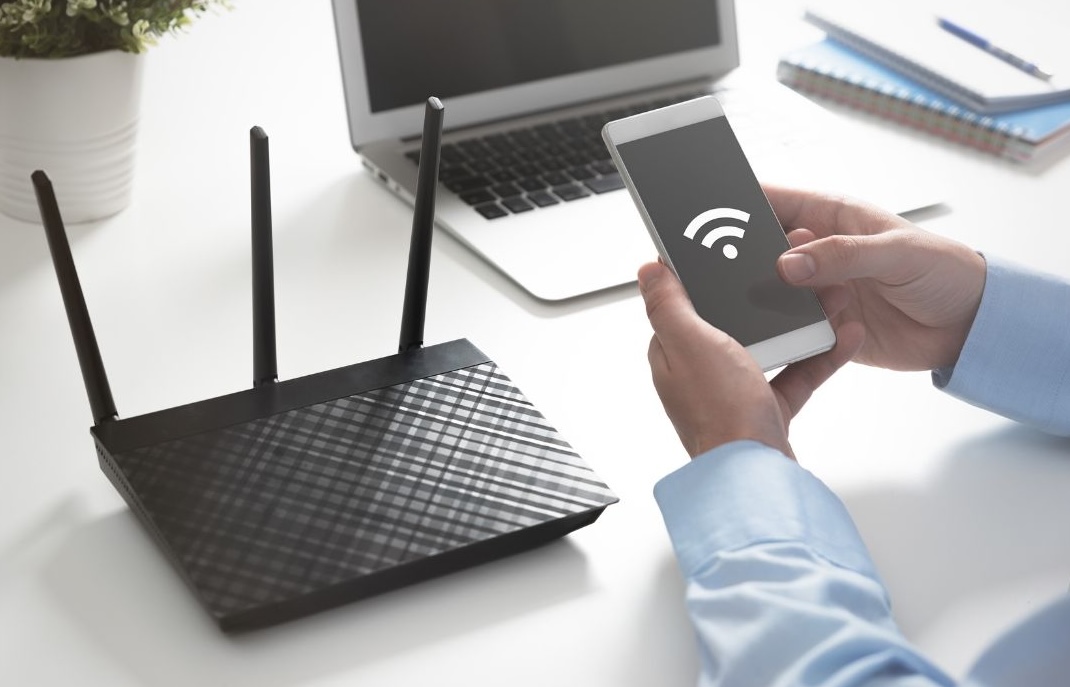The need for faster internet connectivity in both homes and businesses has exploded.
Traditional copper cables, while once sufficient, now struggle to keep up with the increased data demands and multiple connected devices that define modern usage.
As a result, fibre optic cables have appeared as a superior solution for boosting WiFi speeds and overall network performance.
Enhanced Data Transmission Rates

For those asking does fibre optic increases the wifi speed, then the answer is a resounding yes.
Fibre optic cable transmission speed increases significantly, including data transfer speeds, changing how the data is transmitted across networks.
Unlike copper cables, which rely on electrical signals, fibre optics use light to transmit data.
This method allows for far greater speeds due to the efficiency and speed of light transmission.
The technology behind fibre optics involves sending pulses of light through strands of glass or plastic fibres.
This process is not only faster but also less prone to interference, leading to more reliable data transfer.
The efficiency of light transmission means that data can travel long distances without significant loss or degradation, a common issue with copper cables.
Fibre optics offer numerous benefits over traditional copper cables, including superior materials and performance.
While copper cables can suffer from electrical interference and signal loss, fibre optics maintain high performance even over long distances.
Additionally, fibre optics are more energy-efficient and, over time, prove to be more cost-effective due to their durability and lower maintenance requirements.
Statistics show that fibre optic connections can drastically improve download and upload speeds.
Users who switch to fibre optic networks often report significantly faster speeds and more reliable connections.
For instance, businesses that have upgraded to fibre optic networks have noted substantial improvements in data handling and overall efficiency, underscoring the tangible benefits of this technology.
Reduced Latency and Lag
Low latency is required for optimal WiFi performance, especially for activities like online gaming and video streaming where delays can severely impact user experience.
Latency refers to the time it takes for data to travel from its source to its destination and back.
High latency can result in lag, causing interruptions and delays in data transmission.
Fibre optic cables excel in minimising latency, providing smoother and more reliable connections.
The light-based transmission method of fibre optics allows data to travel at the fastest possible speeds with minimal delay.
This results in a more responsive and smooth online experience, whether you’re streaming high-definition videos or in real-time online gaming.
Real-world examples of networks that have brought in fibre optic technology highlight significant improvements in latency.
Users have reported more consistent performance and fewer disruptions, making fibre optics the preferred choice for environments where low latency is essential.
By investing in fibre optic technology, businesses and households can achieve a noticeable reduction in lag and latency, and improve the overall quality and reliability of their internet connections.
Greater Bandwidth Capacity

Copper cables have significant limitations when it comes to handling high bandwidth, which is needed for business owners and tech-savvy individuals alike.
Fibre optics, on the other hand, provide a much higher bandwidth capacity, allowing for greater data throughput and the ability to support more simultaneous connections.
This increased capacity means fibre optics can handle multiple devices without a drop in speed.
In environments like smart homes or offices, where numerous devices are connected at once, fibre optics mean that each device receives sufficient bandwidth.
This capability is particularly needed as the number of connected devices continues to grow, from smartphones and laptops to IoT devices and smart appliances.
Fibre optics’ ability to manage high data volumes without speed degradation makes them an ideal solution for modern network demands.
Users can enjoy unlimited connectivity, whether streaming, gaming, or working with large files, all thanks to the superior bandwidth capacity of fibre optic cables.
Improved Signal Integrity
Fibre optic cables offer unparalleled signal stability, maintaining high-quality connections over long distances and through various environmental conditions.
Unlike copper cables, which are susceptible to electromagnetic interference, fibre optics are immune to such disruptions.
This immunity gives a clear and consistent signal, and for reliable WiFi performance, it has become an effective fibre optic solutions.
The reduction of signal interference and noise is a significant advantage of fibre optics.
In environments with heavy electronic traffic, such as data centres and industrial settings, fibre optics maintain signal integrity, providing stable and uninterrupted connectivity.
Additionally, practical components like fibre patch cords further improve the robustness of fibre optic networks.
Consistent and reliable WiFi performance is a direct result of this improved signal integrity.
Users experience fewer drops and interruptions, leading to a more dependable internet connection.
This reliability is particularly beneficial for businesses where consistent connectivity is essential for operations and productivity.
Future-Proofing WiFi Networks
As data consumption trends rise, there is an increasing need for network infrastructures that can keep up.
Fibre optics are well-suited to adapt to these growing demands, offering compatibility with future WiFi standards and technologies.
This adaptability means that networks built with fibre optics remain relevant and efficient for years to come.
The long-term investment benefits of upgrading to fibre optics are clear.
While the initial cost may be higher than copper, the durability, lower maintenance requirements, and superior performance of fibre optics offer significant cost savings over time.
Fibre optic networks are prepared for future technological advancements, providing an easy transition to next-generation WiFi standards, and providing data centre solutions that are easy and efficient.
For businesses, investing in fibre optics is a strategic decision that allows readiness for future digital demands.
The new capabilities of fibre optics, combined with their ability to integrate with advanced Data Centre Solutions, make them a prudent choice for forward-thinking organisations looking to future-proof their network infrastructures.
Fibre optic cables offer numerous advantages over traditional copper for WiFi networks, including faster data transmission rates, reduced latency, greater bandwidth, improved signal integrity, and future-proofing capabilities.
These benefits make fibre optics an ideal choice for modern connectivity needs, particularly in environments with multiple devices and high data demands.
Businesses and households considering network upgrades should weigh the long-term benefits and potential cost savings of fibre optics.
Upgrading to fibre optics is not just an improvement but a strategic move towards a more efficient and reliable network future.
If you wish to discuss further about fibre optics for your business, contact us today at Altimex for more information.


